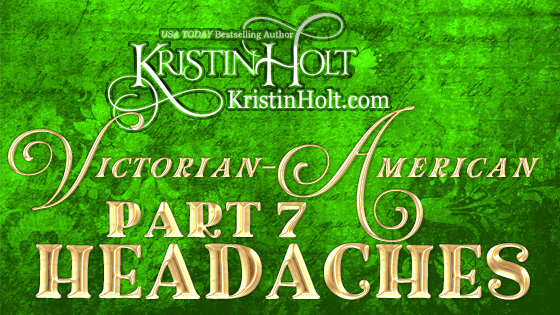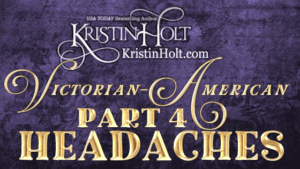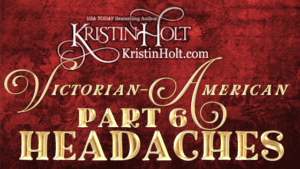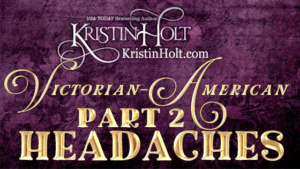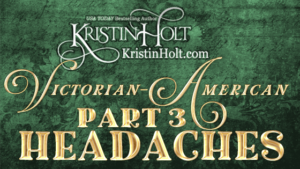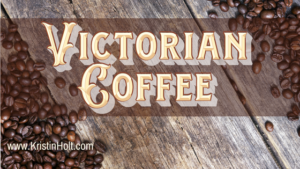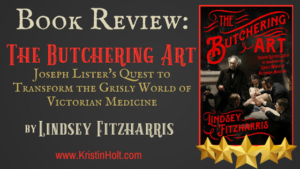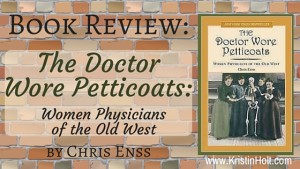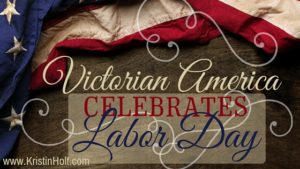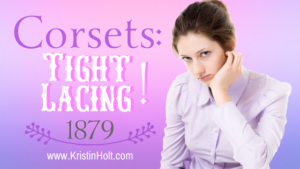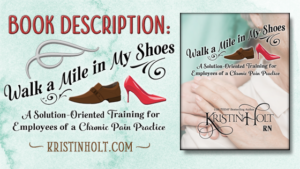Victorian-American Headaches: Part 7
Victorian-American Headaches: Part 7
.
Looking Back
.
We’ve taken a look at patent medicines of the late nineteenth century.
I’ve shared a wild mix of home remedies, all from the late last decades of the 1800s.
In earlier posts within this series of articles, I shared the late-Victorian attitudes about where headaches came from and why some folks suffer more than others… especially those who take rest on Sunday.
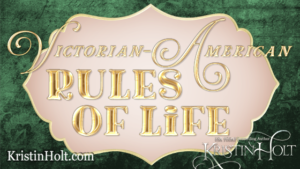
Victorian-American “Rules of Life” explain why some suffer from headaches while others do not. (Part 3)
Some went so far as to accuse hats.
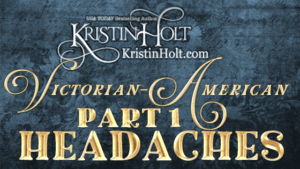 .
.
NOW it’s time to focus on anything–anything!–doctors could do to help. Beyond prescriptions, beyond recommendations for headache powders or patent medicines, what could a physician do to relieve a patient’s suffering?
.
19th Century Doctors
.
The United States has a fine history in the field of medicine as early as the colonial years. Doctors had formed professional societies to regulate one another while Victoria reigned.
The nineteenth century saw numerous medical schools in the United States. Medical Doctors earned a Doctor of Medicine (MD). Interestingly enough, Osteopathic medicine originated in the Post-Civil War Victorian-era United States as a “reform movement against the then rather primitive armamentarium of drugs and surgical techniques.” [Osteopathy, Encyclopædia Britannica]
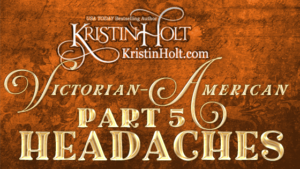 .
.
After all, doctors freely admitted they didn’t know nearly enough about the treatment of headaches. To their way of thinking, headache was a symptom of any one of myriad conditions in the human body.
.
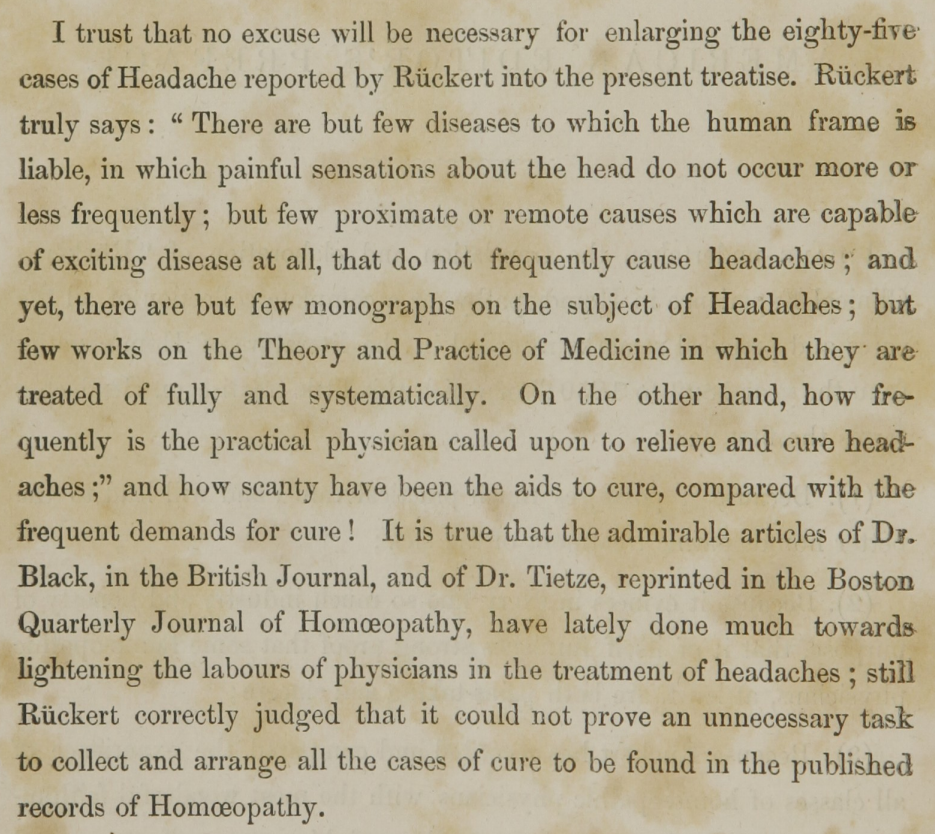
From A Complete Treatise on Headaches…, 1859, page 8.
.
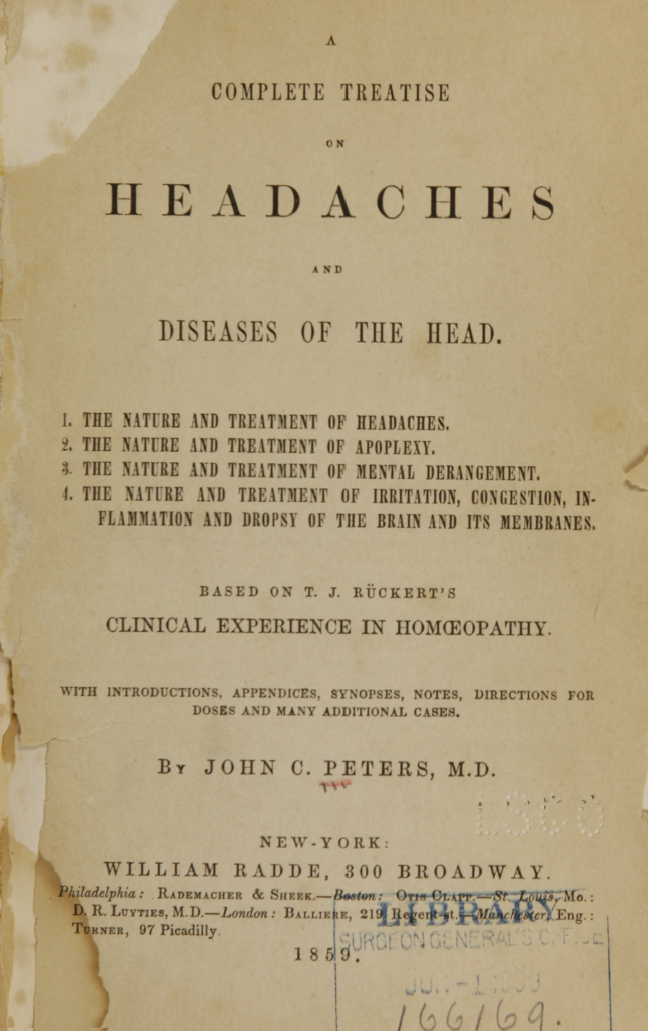
Title Page: A Complete Treatise on Headaches and Diseases of the Head (1859)
.
Take Two Aspirins and Call Me In the Morning
.
Having set the stage, let’s list now what doctors did. Treatments. Precise recipes. “Do this, Mrs. Jones, and your headache will go away. If you do it right.”
In the following image from an 1890 medical text, chemical treatments (from physicians) included:
- antipyrin or phenacetin (in five grain doses)
- morphine injections
- bromide of potassium
- ammonium and choral
- tincture of aconite
- veratrum viride
- Indian hemp
- quinine
- bichloride of iron
.
Note the non-chemical (drugs) treatments:
- ice bag
- shave the head (in a day of long feminine hair)
- treat sub-occipital region with blistering fluid
- drain brain abscesses
.
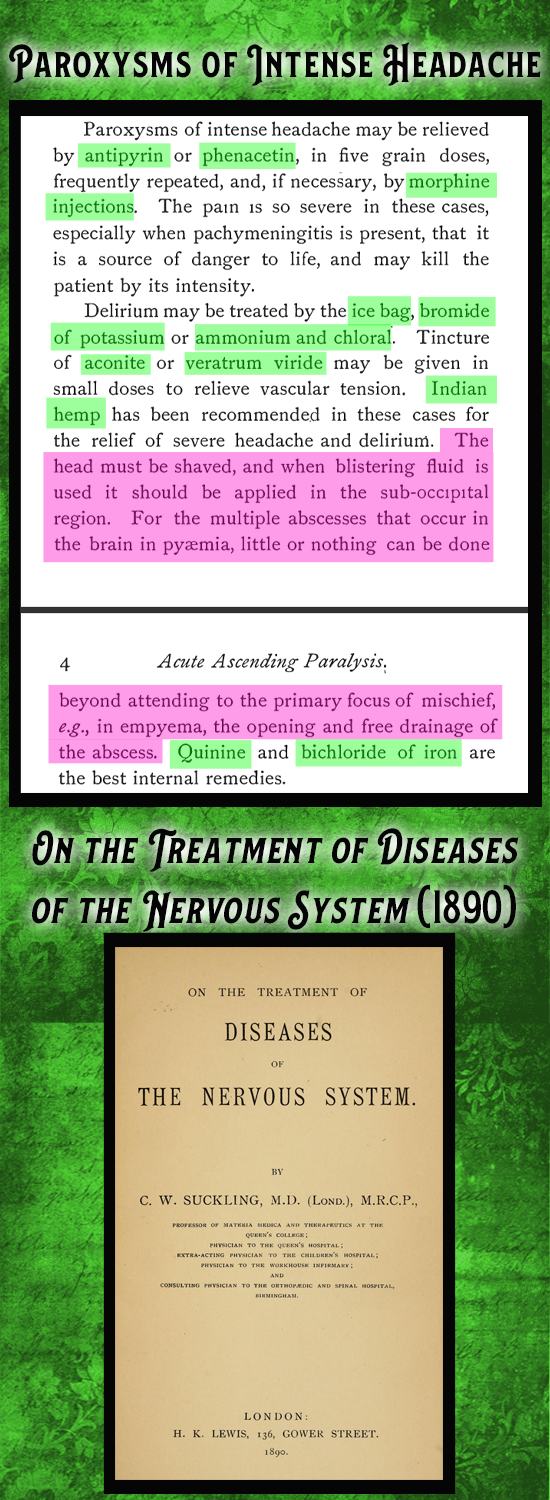
On the Treatment of Diseases of the Nervous System, London, 1890, a medical text, provides instruction to would-be doctors about treating Paroxysms of Intense Headache.
.
From the same text, a section on treating brain tumors ads a few options:
Medicinal interventions:
- belladonna (and Indian hemp)
- exalgine
Non-medicinal interventions (not previously mentioned):
- Leiter’s coil with cold water
- keep patient quiet, with no brain work
- leeches and counter-irritation to the head
.
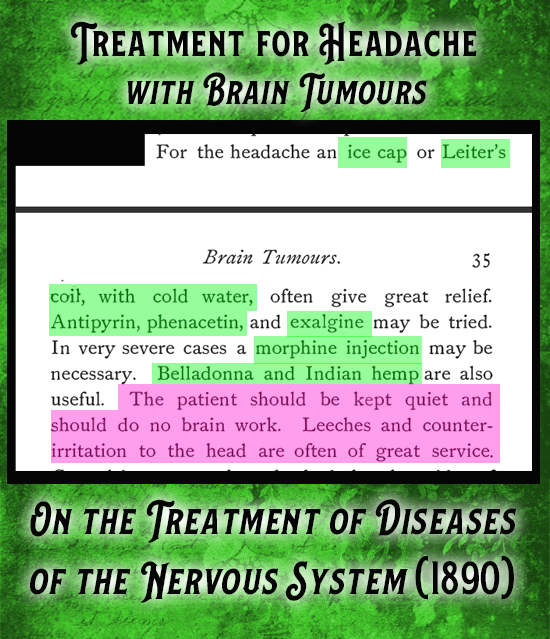
Treatment for Headache with Brain Tumours from On The Treatment of Diseases of the Nervous System (1890).
.
Yes, LEECHES. In an 1890 text.
And as late as 1901:
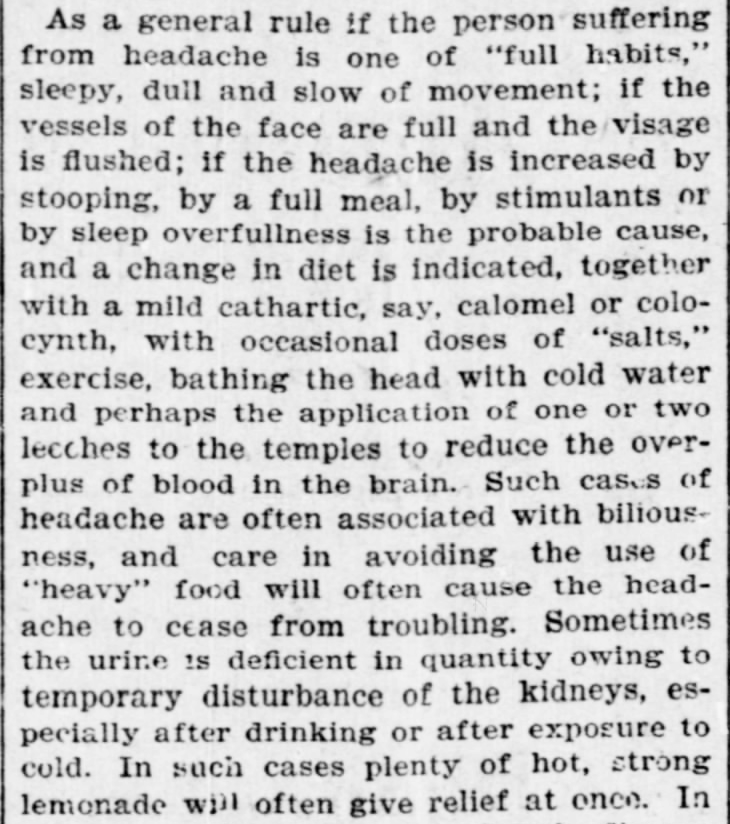
From “Such a Headache! An Old Practitioner’s Notes on the Treatment of the Affliction,” published in The Indianapolis Journal of Indianapolis, Indiana on January 6, 1901.
.
A paragraph or so later,
.
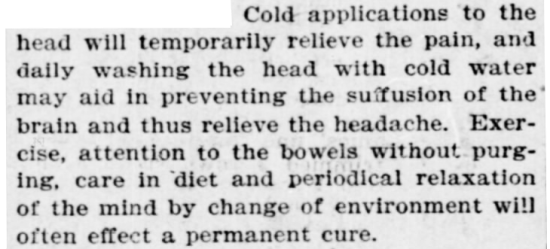
The Indianapolis Journal of Indianapolis, Indiana on January 6, 1901, a segment from “Such a Headache: An Old Practitioner’s Notes on the Treatment of the Affliction.”
.
Followed by…
.
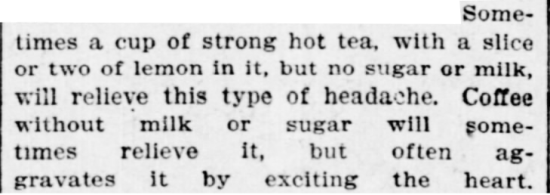
Another snippet from “Such a Headache,” published in The Indianapolis Journal on 6 Jan 1901.
.
Additional medicinal interventions:
- mild cathartic (e.g., calomel or colocynth with occasional doses of “salts”)
.
Additional non-medicinal interventions:
- exercise
- change in diet (“Avoiding the use of heavy food will oft4en cause the headache to cease from troubling.”)
- Coffee and Tea
- Attention to bowels without purging
- “periodical relaxation of the mind by change of environment will often effect a permanent cure”
- hot, strong lemonade (“Sometimes the urine is deficient in quantity owing to temporary disturbance of the kidneys, especially after drinking or after exposure to cold.”)
- bathing the head in cold water
- leeches to the temples (to reduce the over-plus of blood in the brain)
.
A couple more–
.
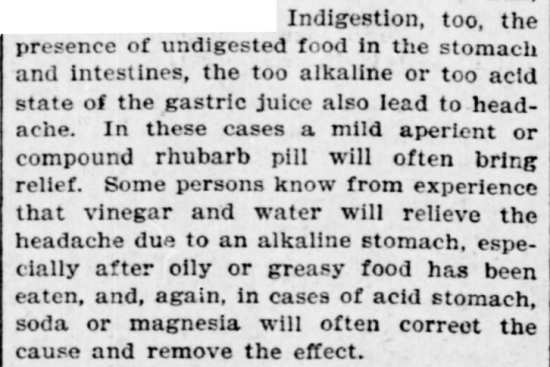
Treating indigestion and acid (or alkaline) stomach as causes of headaches. From The Indianapolis Journal of Indianapolis, Indiana on January 6, 1901.
.
Let’s list the final options (as listed in this 1901 context) for nineteenth century physicians:
.
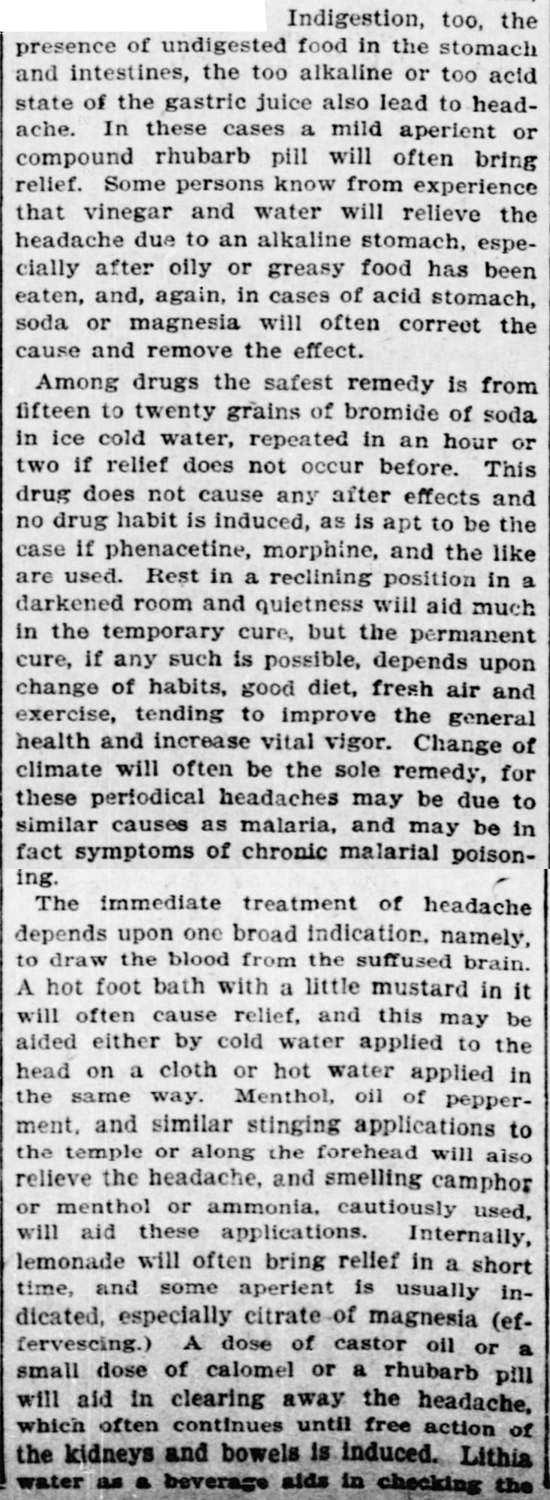
Concluding remarks (part 1 of 2) of “Such a Headache,” within The Indianapolis Journal of Indianapolis, Indiana on January 6, 1901.
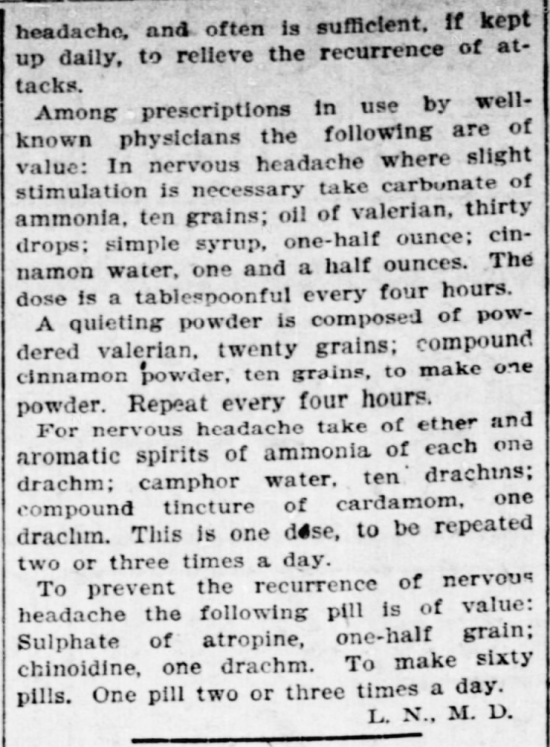
Concluding remarks (part 2 of 2) of “Such a Headache,” within The Indianapolis Journal of Indianapolis, Indiana on January 6, 1901.
.
Let’s add to the list of treatments (both medicinal and non-medicinal) from the conclusion of “Such a Headache,”
Medicinal Options to treat headache:
- compound rhubarb pill (indigestion as cause of headache) (or mild “aperient“)
- soda and magnesia (acid stomach as cause of headache)
- bromide of soda in ice cold water
- citrate of magnesia (effervescing) (as “an aperient is usually indicated”)
- castor oil
- calomel (small dose)
- lithia water (beverage, as often as daily)
- “Prescriptions in use by well-down physicians”: (1 tablespoon every four hours)
- carbonate of ammonia, ten grains;
- oil of valerian, thirty drops;
- simple syrup, one-half ounce;
- cinnamon water, one and a half ounces
- Quieting powder prescription: (makes one powder; repeat every four hours)
- powdered valerian, twenty grains
- compound cinnamon powder, ten grains
- Nervous Headache: (one dose, to be repeated two or three times a day)
- ether, one drachm;
- aromatic spirits of ammonia, one drachm;
- camphor water, ten drachms;
- compound tincture of cardamom, one drachm
- “To prevent the recurrence of nervous headache, the following pill is of value:” (makes 60 pills; one pill two or three times a day)
- sulphate of atropine, one-half grain;
- chinoidine, one drachm
Pres.
Non-medicinal interventions:
- vinegar and water (where alkaline stomach causes headache, especially after consuming oily or greasy food)
- rest in reclining position in darkened room
- “Permanent cure requires change of habits, good diet, fresh air and exercise, tending to improve the general health and increase vital vigor.”
- “Change of climate will often be the sole remedy, for these periodical headaches may be due to similar causes as malaria, and may be in fact symptoms of chronic malarial poisoning.”
- hot foot bath with a little mustard in it
- cold water applied to the head on a cloth (with a little mustard in it), or hot water applied the same way
- menthol or oil of peppermint (or other stinging application) to the temple or forehead
- smelling camphor or menthol or ammonia (caution!)
.
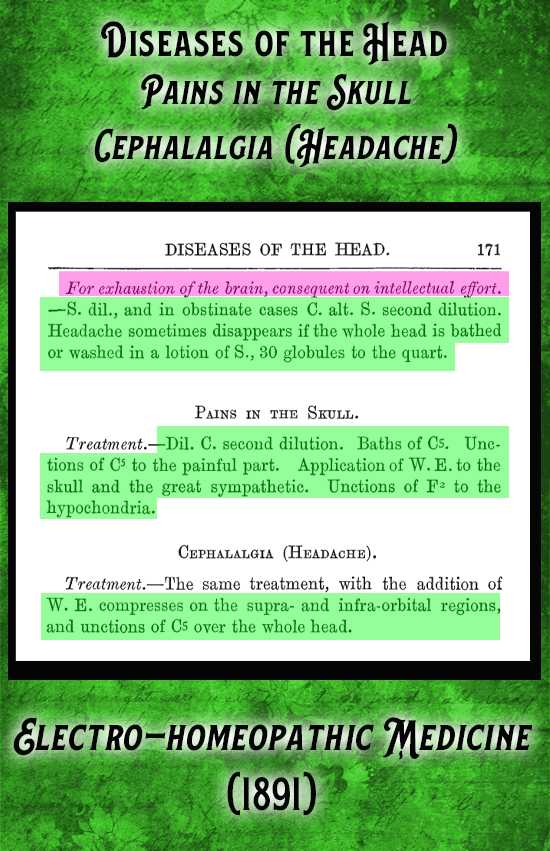
From Electro-Homeopathic Medicine (1891) under Diseases of the Head, specific chemical treatments.
.
Okay… these sound a little scary. Obviously highly focused for the “electro-homeopathic doctors.” The book provides an explanation:
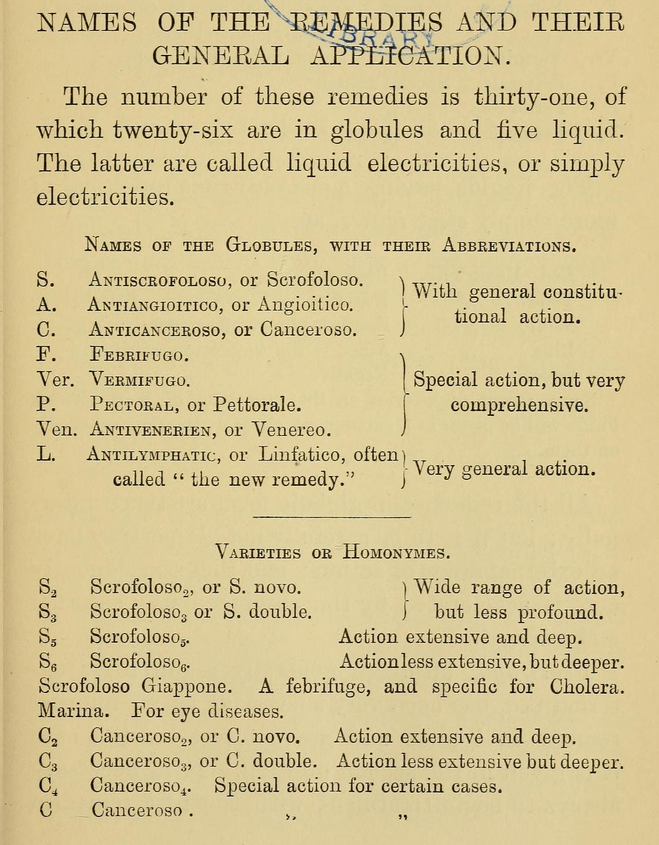
1 of 2: Chemical explanation of abbreviations used within Electro-Homeopathic Medicine, 2nd Edition, 1893.
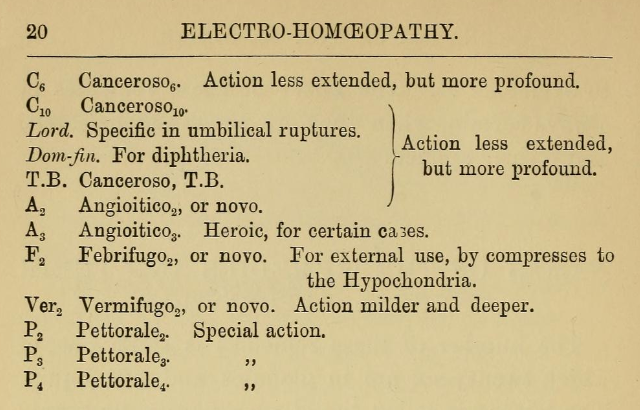
2 of 2– Chemical explanation of abbreviations used within Electro-Homeopathic Medicine, 2nd Edition, 1893.
.
Specific treatments include:
- for intellectual exhaustion— S. dil. (evidently those professionals and chemists knew all about it)
- C. alt S. for obstinate cases
- or bathe the head in a lotion of S. (30 globules to the quart)
- for pains in the skull– Dil. C. second dilution; baths of C5. Unctions of C5 to painful part; application of W.E. to the skull and the great sympathetic (nerve); unctions of F2 to the hypochondria.
- W.E. compresses on the supra- and infra-orbital regions, and unctions of C5 over the whole head.
.
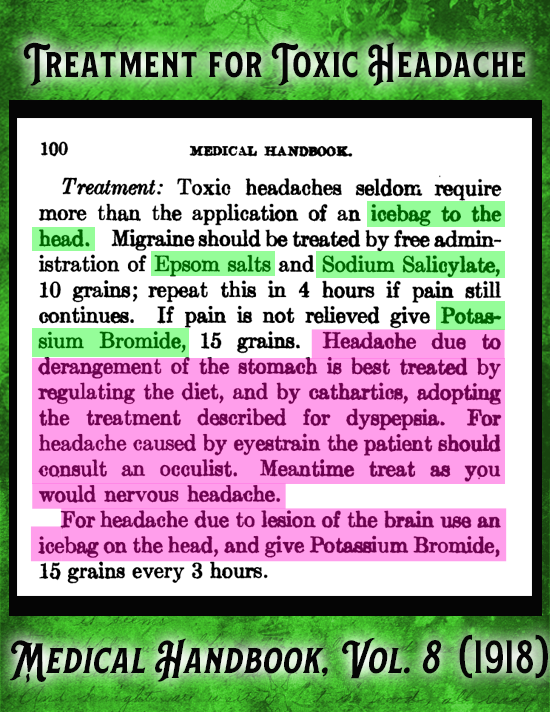
Medical Handbook, Vol 8 (1918), prescribes Treatment for Toxic Headache (“seldom requires more than the application of an icebag to the head. Migraine should be treated by free administration of Epsom salts and Sodium Salicylate, 10 grains.)”
.
While 1918 is a bit beyond our Victorian-era of examination, many historians blend the Victorian and Edwardian eras intentionally as not much had changed. This 1918 Medical Handbook prescribes treatments for headache pain (those not already listed earlier):
- free administration of Epsom salts and Sodium Salicylate, 10 grains
- potassium bromide, 15 grains
- eye strain: consult an occulist
.
19th Century Development: Osteopaths
.
After exploring patent medicines in Part 4, I’m not surprised to see a need for reform in “over the counter” medications. The nineteenth century is known for many reform movements (such as labor laws, women’s suffrage, and dress, among many more). This reform-minded approach to medicine brought about the Victorian-American development: Osteopathic Physician (DO, or Doctor of Osteopathic Medicine).
.
Frontier physician Andrew Taylor Still, MD, DO, founded the American School of Osteopathy (now the A.T. Still University-Kirksville (Mo.) College of Osteopathic Medicine) in Kirskville, Missouri in 1892 as a radical protest against the turn-of-the-century medical system. A.T. Still believed that the conventional medical system lacked credible efficacy, was morally corrupt, and treated effects rather than causes of disease. He founded osteopathic medicine in rural Missouri at a time when medications, surgery, and other traditional therapeutic regimens often caused more harm than good. Some of the medicines commonly given to patients during this time were arsenic, castor oil, whiskey, and opium. In addition, unsanitary surgical practices often resulted in more deaths than cures.
.
Dr. Still invented his new system of medicine to be a reformation of the existing 19th-century medical practices. He imagined that someday “rational medical therapy” would consist of manipulation of the musculoskeletal system, surgery, and very sparingly used drugs. He invented the name “osteopathy” by blending two Greek roots osteon- for bone and -pathos for suffering in order to communicate his theory that disease and physiologic dysfunction were etiologically grounded in a disordered musculoskeletal system. Thus, by diagnosing and treating the musculoskeletal system, he believed that physicians could treat a variety of diseases and spare patients the negative side-effects of drugs.
.
~ Source: Osteopathic medicine in the United States, Wikipedia
.
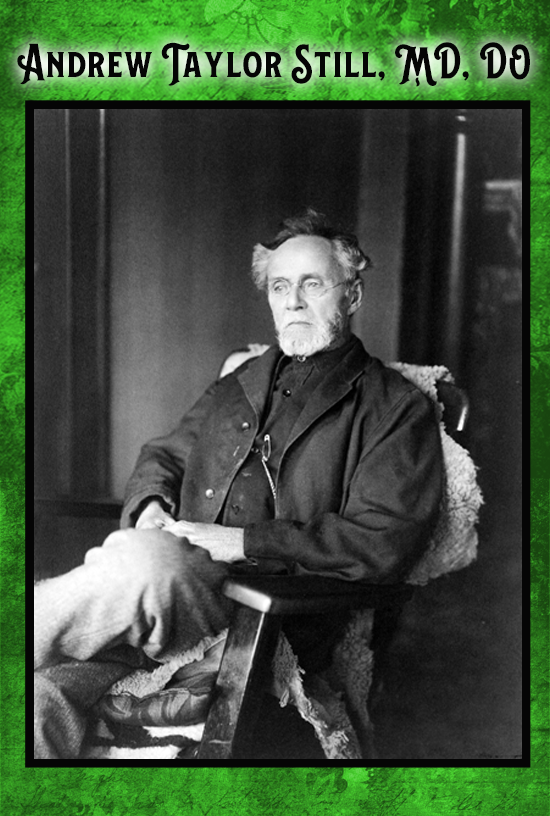
Photograph of Andrew Taylor Still, founder of Osteopathic Medicine. Image: Public Domain, circa 1914. Image: courtesy of Wikipedia.
.
Osteopaths Treat Pain
.
In rejection of the day’s public beliefs about medicine and health, osteopaths employed every “natural” method they could conceive of. Touch. Pressure. Manipulation. Massage. Pressure upon nerve bundles. And an intense focus on cause. Note the causes of chronic headache listed in this 1906 medical text: eye strain, constipation, female diseases, indigestion, etc.
.
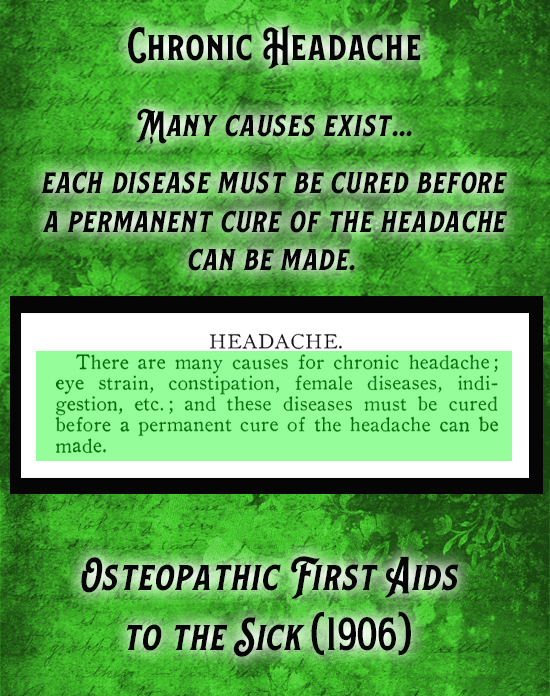
Chronic Headache: Many Causes Exist and each must be cured before a permanent cure of the headache can be made. From Osteopathic First Aids to the Sick (1906).
.
Osteopaths observed that acute headache attacks had different causes (than chronic headache). Listed in Osteopathic First Aids to the Sick (1906), causes of acute headache include:
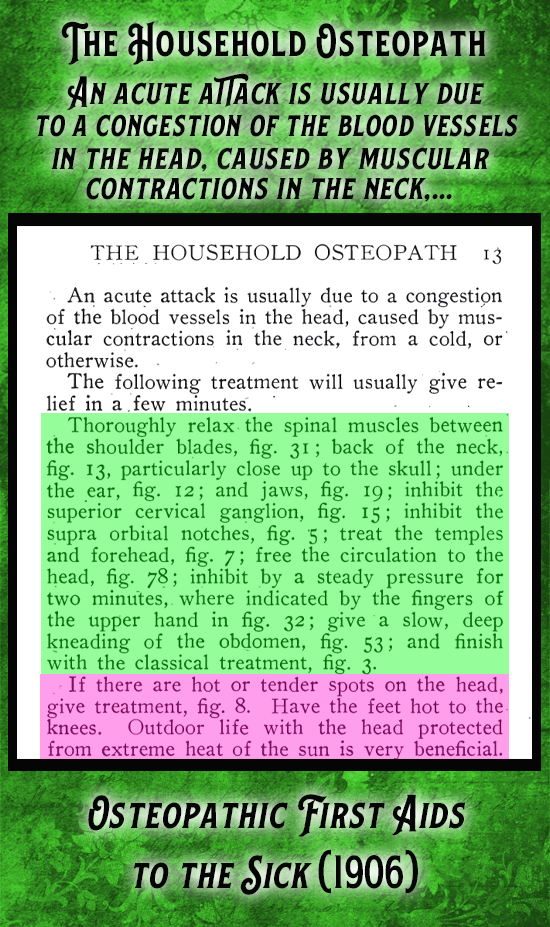
From Osteopathic First Aids to the Sick (1906), Under “The Household Osteopath.”
.
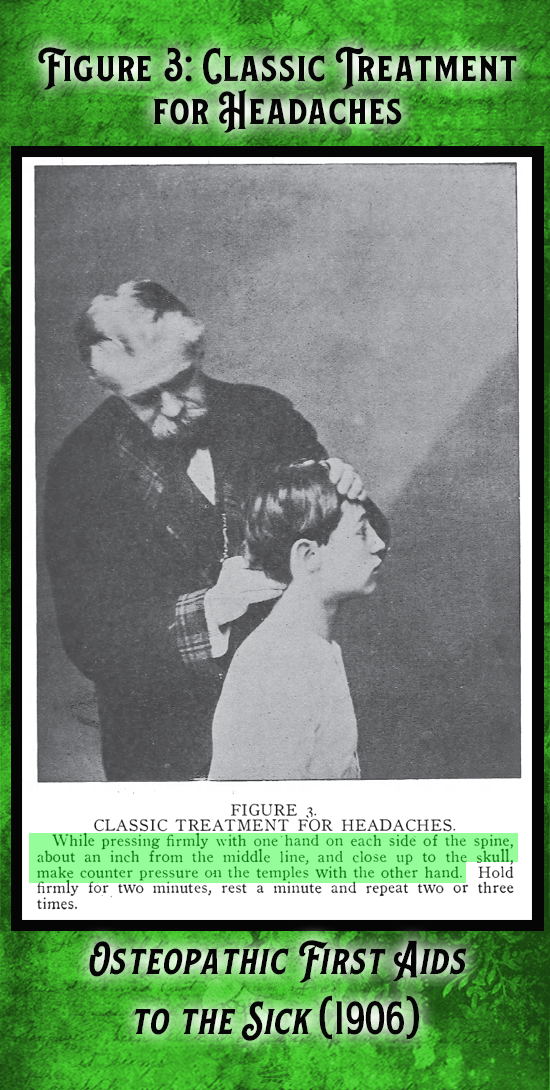
Figure 3: From Osteopathic First Aids to the Sick (1906), includes vintage photograph demonstrating Classic Treatment for Headaches.
.
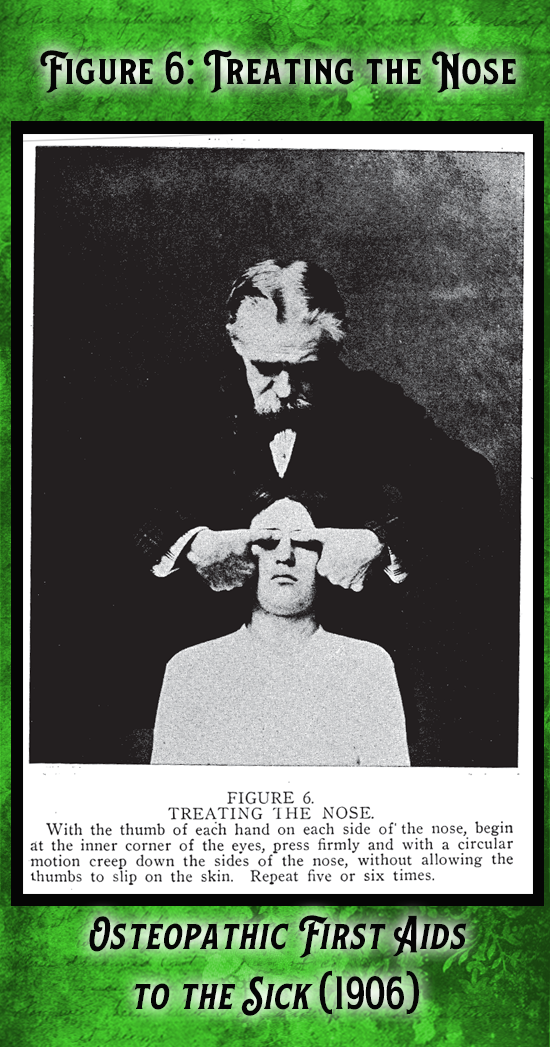
Figure 6 from Osteopathic First Aids to the Sick (1906). Treating the Nose, one step of the headache treatment.
.
Invitation
.
Are you half as surprised as I am?
“That’s it?,” we ask, stunned. “That’s all doctors could do to help?”
What else occurs to you as you examine nineteenth century medicine’s treatment of pain?
Please scroll down and comment.
.
Up Next
.
Victorian-American Headaches: Part 8; Headache as a Symptom
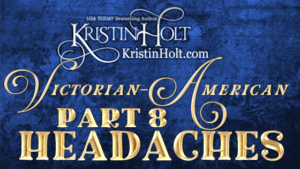
.
Related Articles
.
.
Copyright © 2020 Kristin Holt LC

